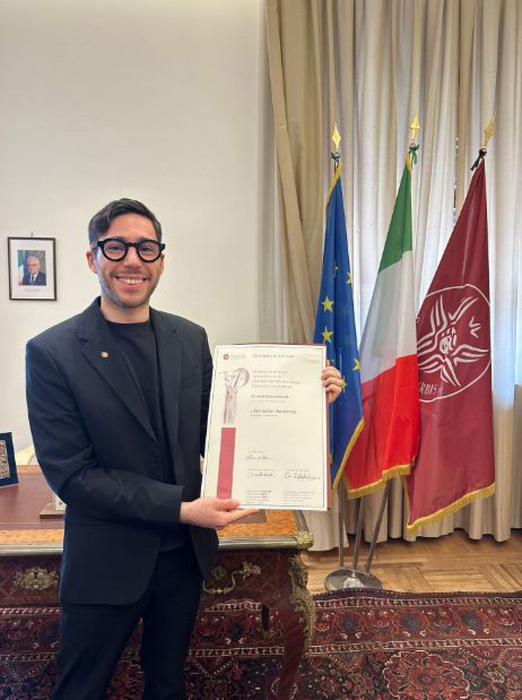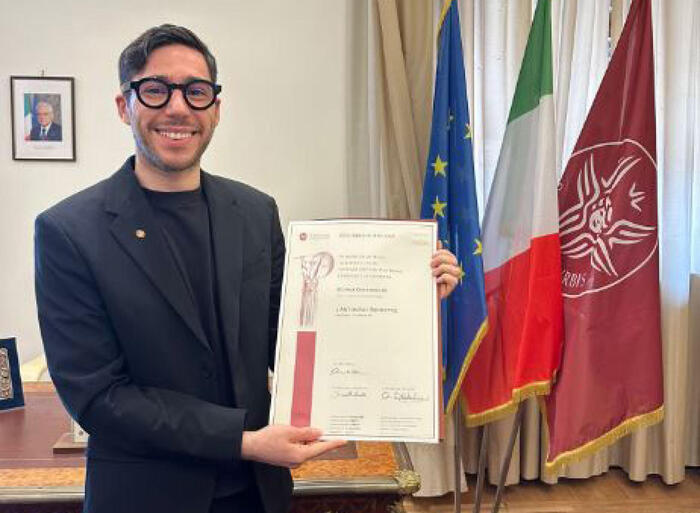Enlarge image
Agile work for the thesis: prototyping, backlog, sprints
Photo: Mosuno / Stocksy United
I still had six weeks to submit my doctoral thesis - and I was missing a complete chapter with the length and research effort of a master's thesis.
It was getting tight.
So I made a plan, an agile plan.
Shortly before, I happened to read a book about agile working, which supposedly helps you do "double the work in half the time."
The idea of agile working comes from product development; start-ups love it.
It works roughly like this: You first very quickly design a still imperfect product (Minimum Viable Product, MVP for short), test it, improve it and repeat this process as often as necessary - instead of always working on a theoretical plan for the perfect product to tinker without actually building anything.
That should also work for my doctoral thesis, I thought to myself: produce a lot of text quickly with a rough concept, evaluate it again and again and adapt the plan.
Enlarge image
Anna Maria Beck, coach for doctoral candidates
Photo:
Katja Sievers
Mindset: by founders
In fact, the tricks of the start-ups can also be applied to scientific work.
"There are many similarities between founders and scientists," says Anna Maria Beck, who advises doctoral candidates and works in the University of Göttingen's startup funding.
"Both develop innovative products - and therefore have to learn to deal with uncertainty."
Beck recommends the following four agile working methods to her coachees again and again in a similar form.
I managed to get my doctoral thesis over the finish line after all.
And they are just as suitable for bachelor, master or term papers.
Method 1: done> perfectly
First of all, I gave myself a new maxim: Say goodbye to "perfect", make friends with "done".
My goal was to get the missing chapter down as quickly as possible - no matter how imperfect it might be.
"Better to get everything out of your head and put on paper first."
Coach Anna Maria Beck
So I typed everything I could think of into a document and added disorganized material that I had already gathered.
Of course, this draft still had many gaps.
In the appropriate places, I added notes such as "Secondary literature is missing here" in the document.
Expert Beck also advises: "Instead of putting yourself under pressure to come up with the perfect plan at the beginning, you should first get everything out of your head and onto paper or into your laptop."
Method 2: backlog
From my notes I created a to-do list, often referred to as a »backlog« or »to-do list« in agile environments.
I used a piece of paper and pen - an Excel spreadsheet is also suitable.
It is important to collect all tasks in one place - this saves intellectual capacity.
Within the list, I prioritized the tasks according to their importance and urgency.
Points like "Another example would be good here" moved backwards in my backlog - initially a luxury problem.
Each of my tasks was given a score: 1 for very small ones ("check quote"), 4 for slightly larger ones ("read essay") and 8 for even larger ones ("write subsections").
I wrote down the points in pencil next to the respective task.
Beck recommends taking your time when creating such a backlog, even if it may feel strange at first: "The mental structuring of the project is part of the work that saves a lot of time in the process."
Method 3: sprints
The very first draft of the missing chapter took me two weeks - my first "sprint".
In agile work, this term means a work segment that has a very specific goal.
Sprints can last one to three weeks, during which you work through all the tasks that are important to achieve the goal.
My first sprint resulted in 60 pages of text, in the backlog there were still a lot of unfinished business.
But: I had a minimum viable product.
»Don't write forever on a supposedly perfect text«
Coach Anna Maria Beck
Beck recommends this form of prototyping especially for the writing process: "It is better to quickly create an imperfect first draft that can then be revised, instead of forever writing on a supposedly perfect text."
Method 4: feedback and retrospective
Next, I revised the text with the less important tasks from the backlog - for example, I looked for further examples that were not vital for the text, but made it better.
That was my second sprint, it lasted a week.
Then I gave the chapter to my supervisors, who added their feedback - this is also a typically agile element.
In the remaining three weeks, I put all of my work through several revision loops.
I always knew: the work is already complete.
It is imperfect and may never be.
But it has a beginning, a main part, an end, I could hand it all over like that.
That calmed my nerves immensely.
more on the subject
Interview with coach: "Agile work is about changing myself" By Carolina Torres
What does a Scrum Master actually do? By Korinna Kurz
After every sprint, I also looked back: What went well, what not so well?
I noticed that I had sometimes gotten wrong, for example when looking for a certain quote.
This deliberate retrospective is like planning: it takes up time - but you often save that elsewhere.
The next time I had to look for a quote, I asked myself: Will my doctoral thesis fail if I delete the passage?
No?
Then away with it.
Motivation: Show successes
After each sprint, I also added up all the points for the tasks I had completed and noticed: I collected more points on average in each sprint than in the previous one.
It was like I was always going up a level.
My post-its with the completed tasks did not go to the trash, but rather on a "done" list.
With each passing day the "To Do" area got smaller and the "Done" area bigger.
"Keeping track of successes is very important for motivation."
Coach Anna Maria Beck
"Keeping track of successes and also appreciating them is very important for motivation and self-esteem," says Beck.
Unfortunately, this is often neglected in the stress of a thesis.
She suggests to her coachees to note on a "success wall" what went well, or to throw a crumpled piece of paper into a glass for each productive hour of work.
In addition, in between you should keep asking yourself why you are doing all this, "preferably every day," says Beck.
Because the motivation could change in the course of the process.
In the end, my motivation was just to get ready.
So I remembered the moment when I hand in my doctoral thesis.
Did everything work out exactly as I thought it would on the way there?
No.
But I had an agile, adaptable plan - and that was my great luck.















